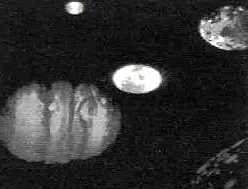Now, it is Jupiter s turn
 speculating on life in space has suddenly become everybody's favourite pastime. If it was Mars which hogged the headlines some days ago, it is now the Jovian planet that is having the benefit of astronomists' deliberations.
speculating on life in space has suddenly become everybody's favourite pastime. If it was Mars which hogged the headlines some days ago, it is now the Jovian planet that is having the benefit of astronomists' deliberations.
Scientists have for sometime now, thought of Jupiter's satellite - Europa - as a prime candidate for supporting extraterrestrial life. The Galileo probe (Down To Earth, Vol 4, No 16) was one such effort to glean more about prospects of life on the satellite, the size of Earth's moon. The crux of the mission was to find if Europa had a liquid zone as essentially, the search for life is the search for water. After all, water is a primary requisite for supporting any kind of life-form.
Pictures and data received from the Galileo probe, which flew within 155,000 km of Europa, give enough cause for optimism. Unveiling them at the Jet Propulsion Laboratory in Pasadena, California, on August 13, scientists presented a dimension of what could exist in faraway Europa. Uneven features on the moon's surface that resemble ice floes in the Earth's polar region, small craters, bright scars of former geyser eruptions and many crisscrossing dark bands
